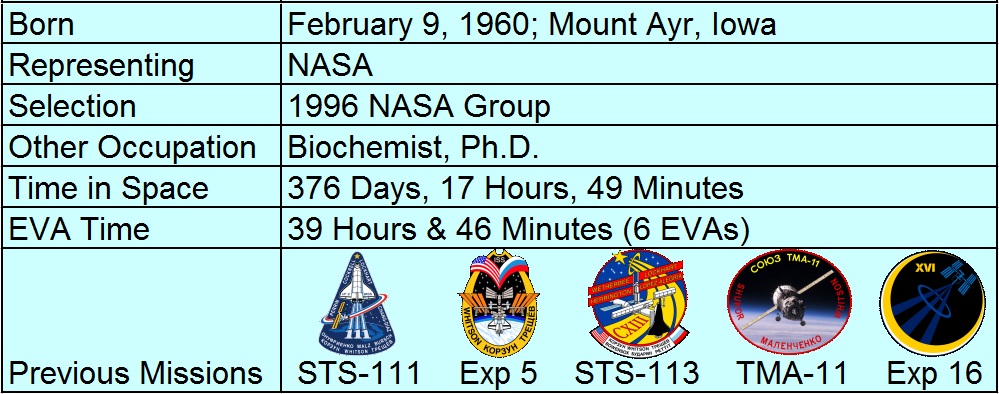Peggy Whitson
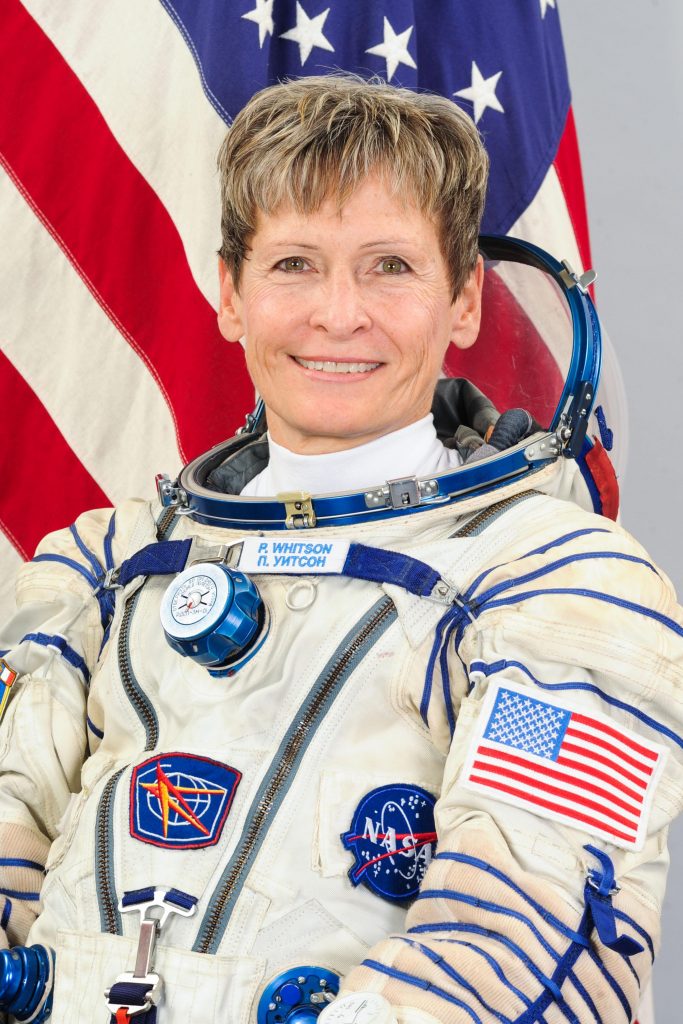
Peggy Whitson is a NASA astronaut and American biochemistry engineer with two prior missions to the International Space Station, flying on the U.S. Space Shuttle and Russian Soyuz craft. One of NASA’s most experienced female Astronauts, Whitson spent 377 days in space and served as the agency’s chief astronaut.
Peggy Annette Whitson was born on February 9, 1960 in Mount Ayr, Iowa and grew up on a farm outside of Beaconsfield, Iowa, graduating from Mount Ayr Community High School in 1978. She received a bachelor’s degree in biology and chemistry from Iowa Wesleyan College in 1981 and went on to earn a doctorate in biochemistry from Rice University in 1985. After completing her graduate work, Whitson continued at Rice as a post-doctoral fellow before beginning her studies at NASA’s Johnson Space Center as a National Research Council Resident Research Associate.
Whitson served as a supervisor for the Biochemistry Research Group at a medical sciences contractor before working as Technical Monitor (1991-93) in the Biochemistry Research Laboratories in the Biomedical Operations and Research Branch. In 91/92, she was involved in the development of the Bone Cell Research Experiment flown on Shuttle Mission STS-47. At the same time, Whitson was a member of the US-USSR Joint Working Group in Space Medicine and Biology.
Beginning in 1992, Peggy Whitson was assigned to the position of Project Scientist for the Mir-Shuttle Program, overseeing the science activities on three Space Shuttle missions and long-duration Mir increments until the conclusion of Program Phase 1A in 1995. Between 1993 and 1996, she also held the position of Deputy Division Chief of the Medical Sciences Division at JSC. In 1995/96 she was the co-chair of the U.S.- Russian Mission Science Working Group.
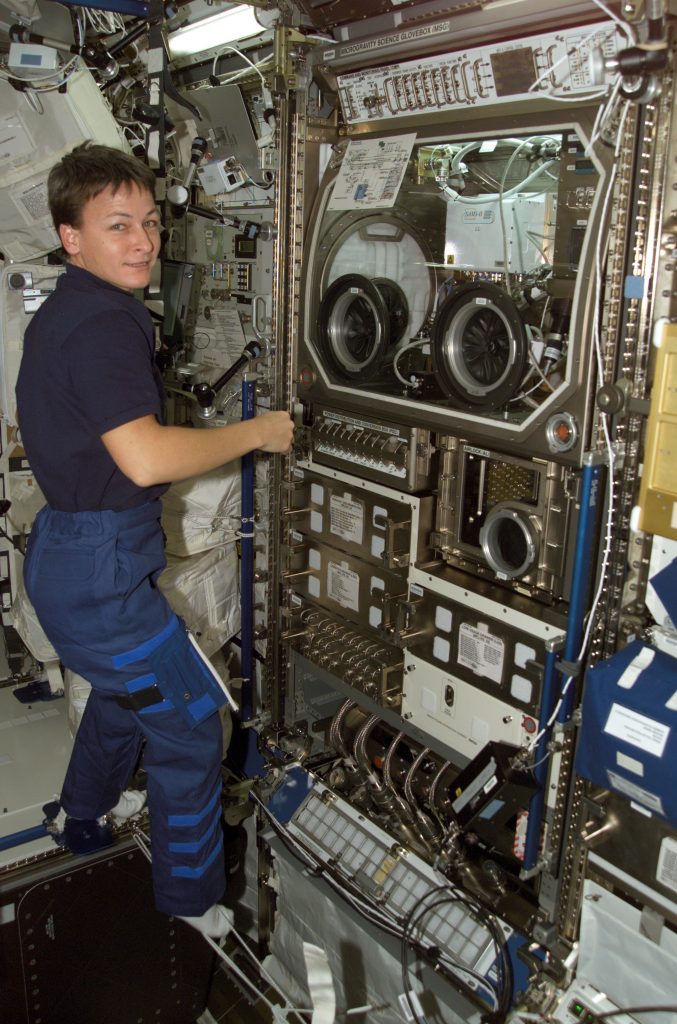
Parallel to her NASA activities, Whitson worked as an Adjunct Assistant Professor at the University of Texas Medical Branch from 1991 to 1997 and as Adjunct Assistant Professor at Rice University in 1997.
NASA selected Peggy Whitson as Astronaut Candidate in 1996 as part of the agency’s 16th Astronaut Group. After two years of basic training and evaluation, Whitson entered the Astronaut Office where she supported Operations Planning and served as the lead for the Crew Test Support Team in Russia in preparation for International Space Station mission operations.
She received her first flight assignment in July 1999 as part of the backup crew for ISS Expedition 3 and the prime crew of Expedition 5. For her backup assignment, Whitson completed two years of flight specific training with Russian Cosmonauts Valery Korzun and Sergei Treschchev. Their backup assignment was not required and, after the launch of the Expedition 3 trio, they transitioned to their prime assignment for another year of training operations.
Whitson, Korzun and Treschchev launched on June 5, 2002 aboard Space Shuttle Endeavor with four STS-111 crew members and a packed Multi-Purpose Logistics Module. Arriving at ISS, the trio replaced Yuri Onufrienko, Carl Walz and Daniel Bursch who departed with Endeavor after a docked mission of eight days. During Endeavour’s stay, three spacewalks were performed to outfit the Mobile Servicing System of the Space Station.
Expedition 5 had a duration of nearly 185 days, 178 of which were spent aboard the Space Station from June to December 2002.
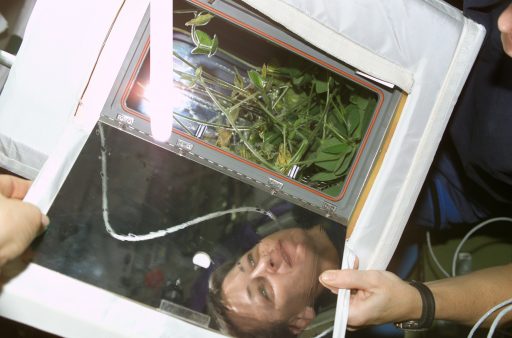
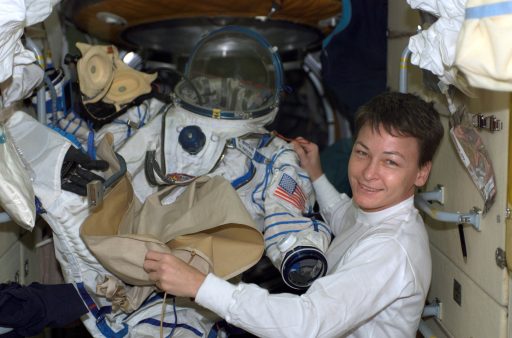
Their mission had a busy scientific program with particular focus on a series of materials science experiments, plant growth studies and human research concerned with space-induced changes in various bodily systems including the pulmonary and cardiovascular systems. Led by commander Korzun, the crew oversaw a Progress rotation in late June with the Progress M-1 8 vehicle departing and the M-46 freighter arriving just days later to deliver 2.3 metric tons of fresh cargo.
Also on tap for the crew was an end-to-end test of the Station’s robotics system that involved walking Canadarm2 off between its four base points to verify all were operational and ready to support future ISS outfitting operations. In August, a pair of EVAs was performed by the resident crew members.
The first, conducted by Whitson and Korzun, was dedicated to the installation of six debris panels on the Zvezda Service Module to protect it from space debris impacts and contamination by corroding propellant residuals from the engines. EVA #2 by Korzun and Treschchev was dedicated to the installation of an external experiment frame, the replacement and installation of external material exposure experiments, the installation of a thruster residue measurement device and a pair of HAM radio antennas.
Progress M-46 departed in late September to be replaced by the M1-9 spacecraft ahead of the next Space Shuttle mission which ended up slipping from early October to due Hurricane Lili which also required Mission Control Houston to shut down for two days. This led to systems power-downs aboard ISS because the Solar Arrays were locked in position while the backup control center in Moscow had authority over the U.S. Segment of the station.
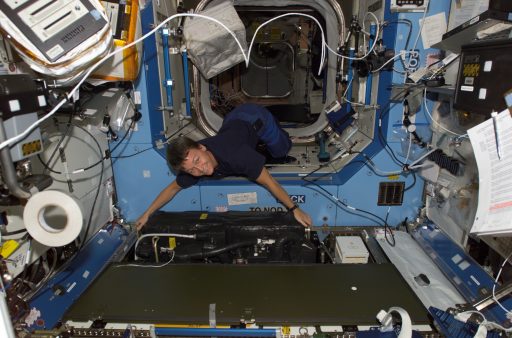
Space Shuttle Atlantis arrived at ISS on October 9 with a crew of six and the Station’s S1 truss segment in its payload bay which was installed and outfitted during the mission’s three spacewalks. With Atlantis departing after a week-long stay, the way was clear for the Soyuz TMA-1 spacecraft that docked to the Pirs Module on November 1 for a short visit by crew members Zalyotin, DeWinne and Lonchakov who completed a nine-day science mission before departing on the Soyuz TM-34 spacecraft which had reached its maximum on-orbit lifetime.
Endeavour returned to ISS on November 25 and delivered the P1 Truss Segment as well as the Expedition 6 crew of Ken Bowersox, Nikolai Budarin and Don Pettit who swapped places with the resident crew members that departed on Endeavour after a 7-day docked mission that included three spacewalks to outfit P1.
Back on Earth after a 184-day and 22-hour space flight, Peggy Whitson re-joined mission operations, serving as the Deputy Chief of NASA’s Astronaut Office from November 2003 to May 2005 followed by a five-month tenure as Chief of the Station Operations Branch.
In June 2003, Whitson was the commander of the NEEMO 5 underwater expedition as part of NASA’s Extreme Environment Mission Operations program dedicated to evaluating procedures for future surface expeditions to the Moon and asteroids.
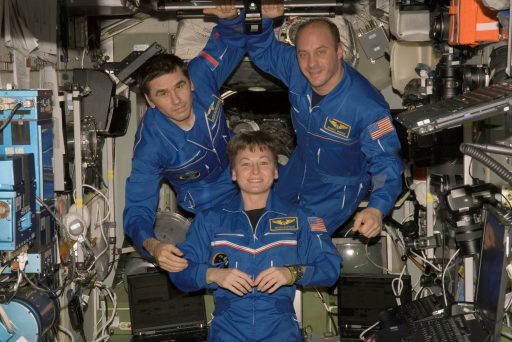
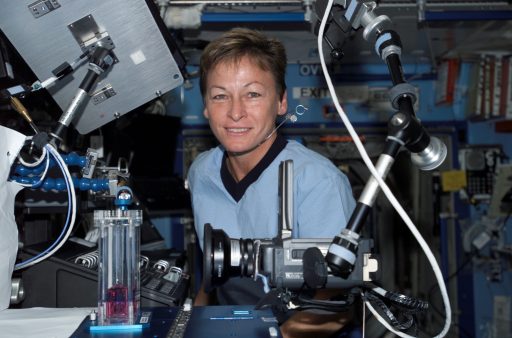
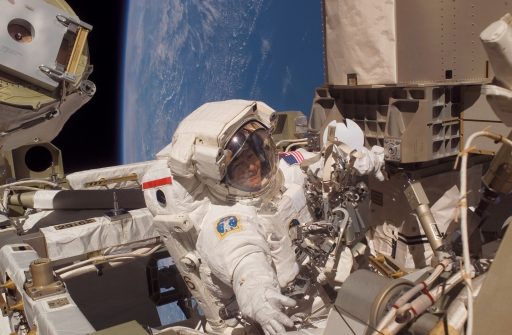
Starting in November 2005, Whitson trained as the backup commander for Expedition 14 together with Yuri Malenchenko and Clay Anderson. Whitson and Malenchenko transitioned to the Expedition 16 prime crew along with Anderson and three other ESA/NASA Astronauts to be ferried by the Space Shuttle.
Soyuz Commander Malenchenko, Flight Engineer Whitson and Malaysian Astronaut Sheikh Muszaphar Shukor lifted off aboard Soyuz TMA-11 on October 10, 2007 for a two-day link-up with ISS ahead of a short handover from the Expedition 15 crew of Oleg Kotov and Fyodor Yurchikhin as well as Clay Anderson who transitioned to Expedition 16 when Kotov, Yurchikhin and Shukor landed.
In late October, the Station was visited by Space Shuttle Discovery and a crew of seven, delivering to ISS the Harmony module that was installed robotically followed by outfitting of the module as part of a total of four EVAs that also accomplished the relocation of the P6 truss segment from a position attached to Z1 over to its permanent spot as the outermost segment on the port truss assembly of the Station. Discovery remained docked for nearly 11 days, also serving as a crew rotation flight, bringing Anderson back to Earth and leaving Dan Tani on ISS for three and a half months. In these three and a half months, the three crew members focused on science and the continuation of ISS reconfigurations.
Venturing outside the hatches of ISS, Malenchenko and Whitson performed a 6-hour 55-minute EVA to prepare Pressurized Mating Adapter 2 for a robotic relocation to the Harmony module that was completed a few days later. Harmony, attached to a temporary location on the Destiny lab, was moved to the front of ISS shortly thereafter to restore the forward docking port. Whitson and Tani completed the second third EVAs of Expedition 16 in November to finish the outfitting of Harmony in its permanent position. Tani and Whitson again stepped outside in December for the 100th EVA in support of Station Assembly and Maintenance, performing inspections on the S4 Solar Alpha Rotary Joint followed by another EVA in January 2008 to replace a motor within the S4 SARJ to restore functionality.
Space Shuttle Atlantis arrived at the Station on February 9 carrying to ISS the 12 metric-ton Columbus module, Europe’s orbital laboratory module.
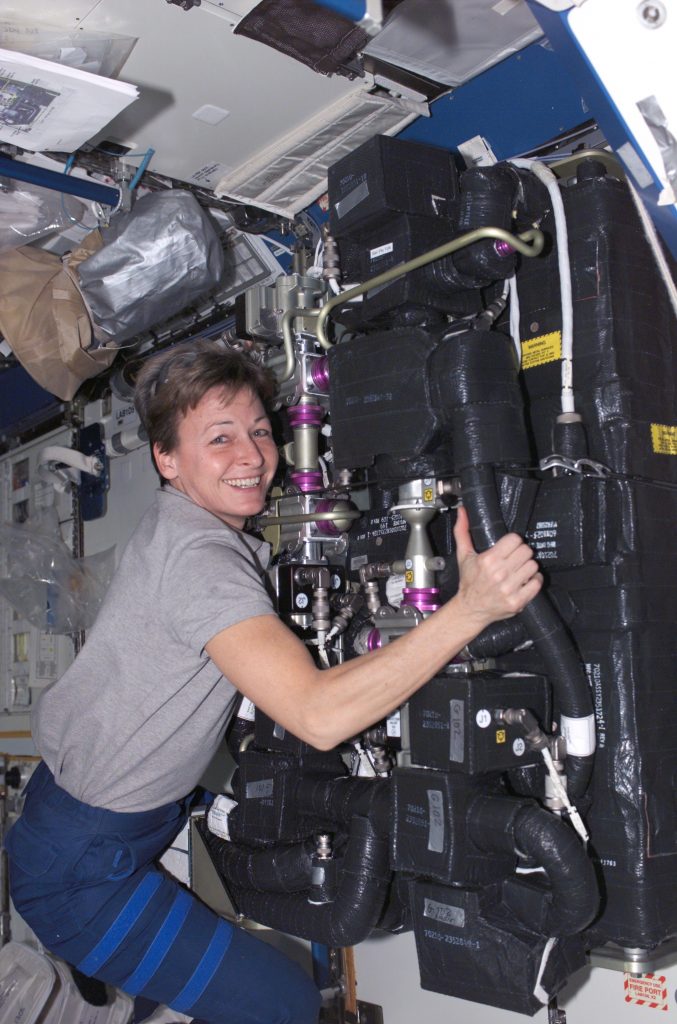
After Columbus was installed to Node 2, three EVAs were performed to outfit the module, install external experiment payloads and complete other ISS outfitting such as the installation of the P1 Nitrogen Tank Assembly and the Station-to-Shuttle Power Transfer System. ESA Astronaut Leopold Eyharts replaced Dan Tani to stay on ISS to complete the internal outfitting of the Columbus module.
The next laboratory module to be attached to Node 2 arrived in March aboard Space Shuttle Endeavour. The Japanese Kibo module was installed robotically and the mission included five EVAs for the outfitting of Kibo and the assembly of the Dextre robot that was also delivered by Endeavour. Eyharts was replaced by Garret Reisman when Endeavour departed after a docked mission of nearly 12 days, becoming the first Shuttle mission to use the Station to Shuttle Power Transfer System.
After Endeavour departed, the next vehicle to arrive at ISS was the first Automated Transfer Vehicle, Joules Verne.
Soyuz TMA-12 arrived at ISS on April 10 bringing the next long-duration crew of Sergei Volkov and Oleg Kononenko to ISS along with the first Korean Astronaut Yi So-Yeon who returned to Earth with Yuri Malenchenko and Peggy Whitson. The three crew members were not treated to a gentle return to Earth – instead, their Soyuz went through a ballistic re-entry caused by a botched separation of the Soyuz Service Module due to one of five pyrotechnic bolts malfunctioning. The additional G-loads encountered by the crew during Entry caused some minor injuries such as bruises. A similar problem had occurred on the Soyuz TMA-10 mission.
Whitson’s fourth spaceflight was 191 days and 19 hours in duration.
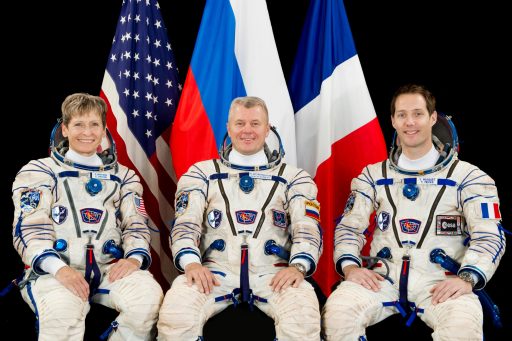
From October 2009 to July 2012, Peggy Whitson was Chief of the Astronaut Office and she was in the running for the one-year mission to the International Space Station that would eventually be performed by Scott Kelly after concerns associated with accumulated radiation exposure arose for Whitson who had already spent over a year in orbit during her previous flights.
However, doctors cleared her for another half-year stint and, in October, 2014 information emerged that Whitson would fly as part of ISS Expedition 50/51 and serve as backup crew member for Expedition 48/49.
Whitson entered flight-specific training with her crew of Soyuz Commander Oleg Novitskiy and Thomas Pesquet including activities at the ISS partner agencies for systems and procedure familiarization as well as Soyuz training in Russia.
During her third long-duration mission to ISS, Whitson will serve as flight engineer during Expedition 50 before taking the role of Commander for Expedition 51 in 2017.

